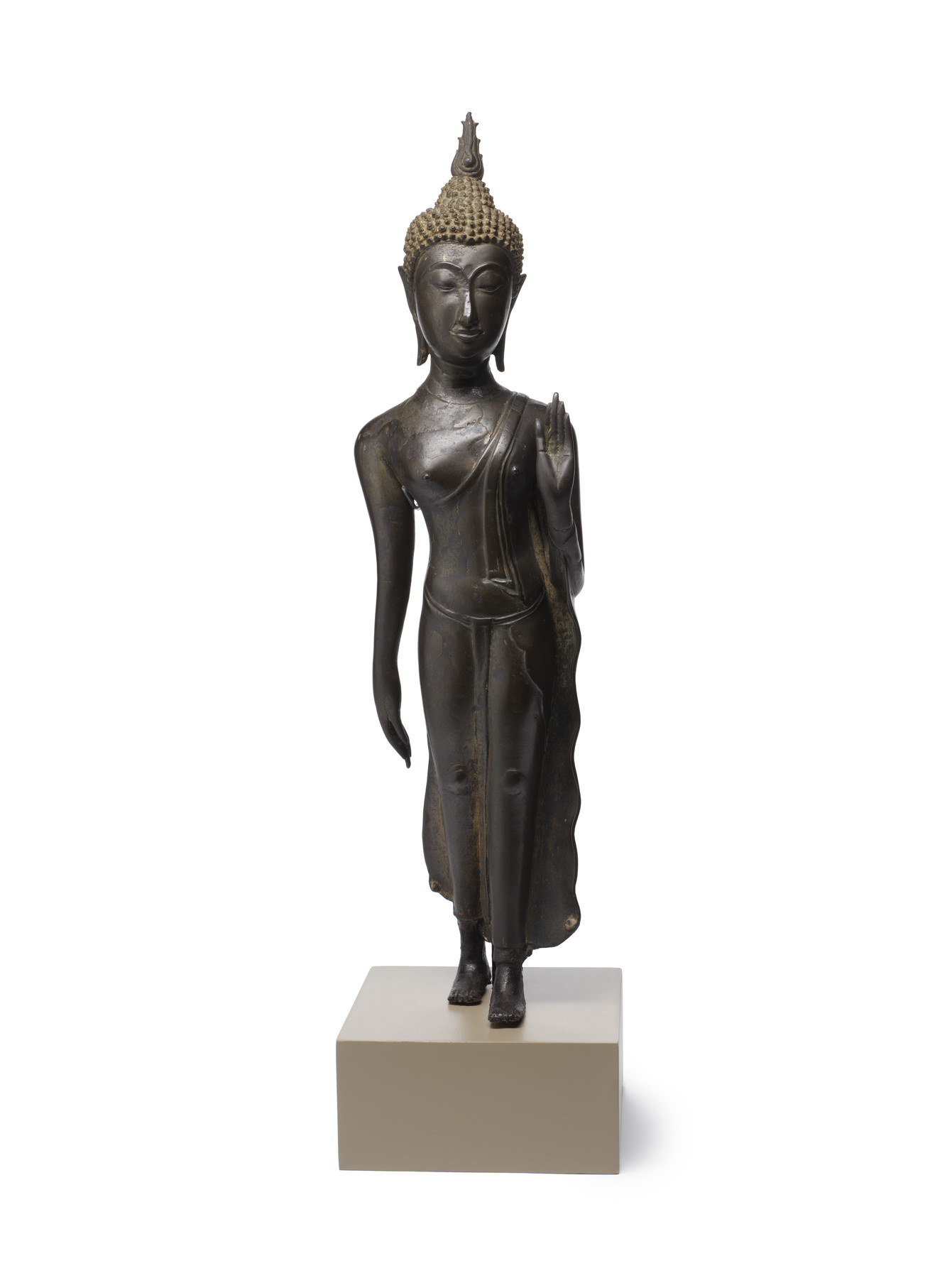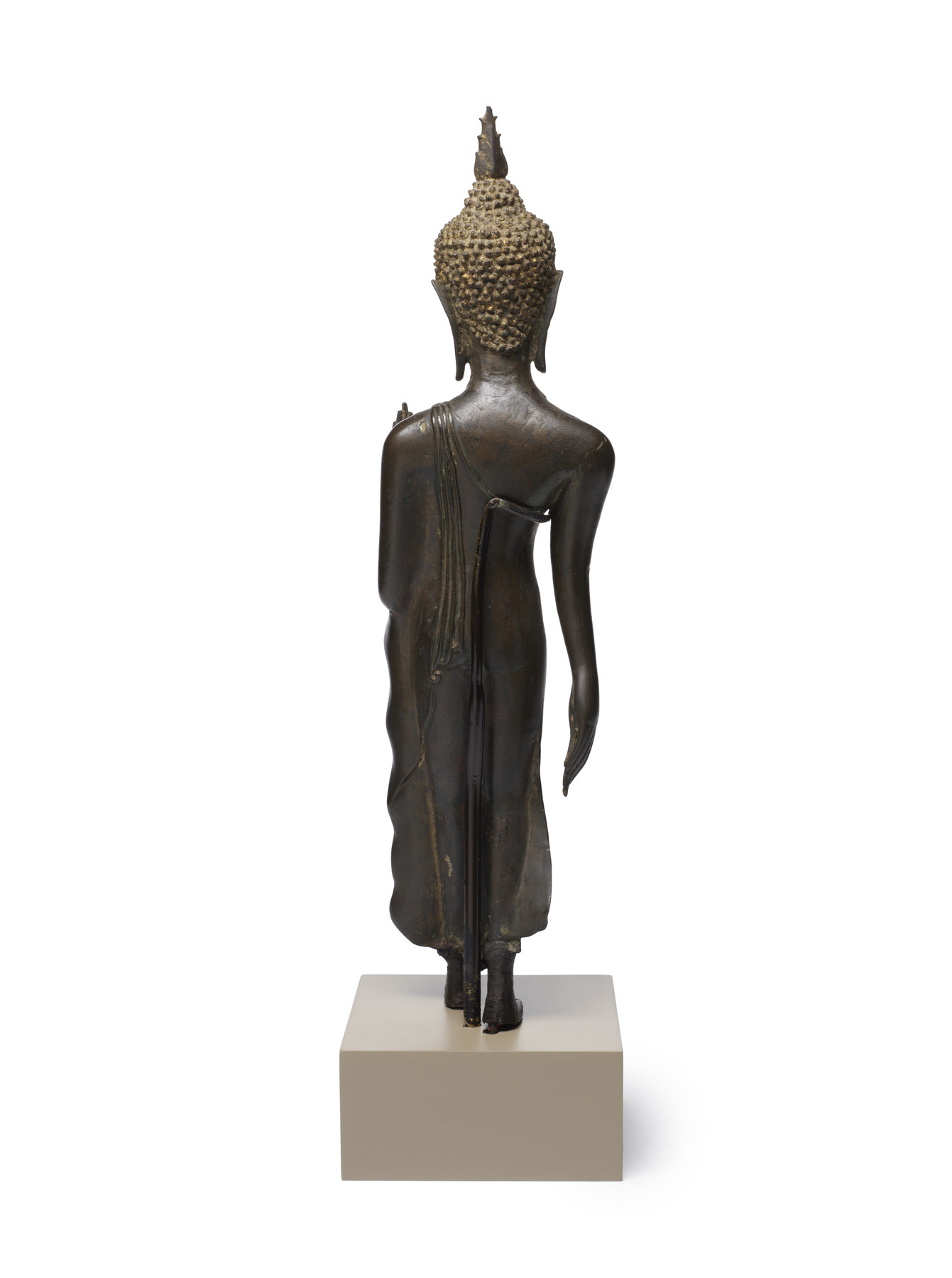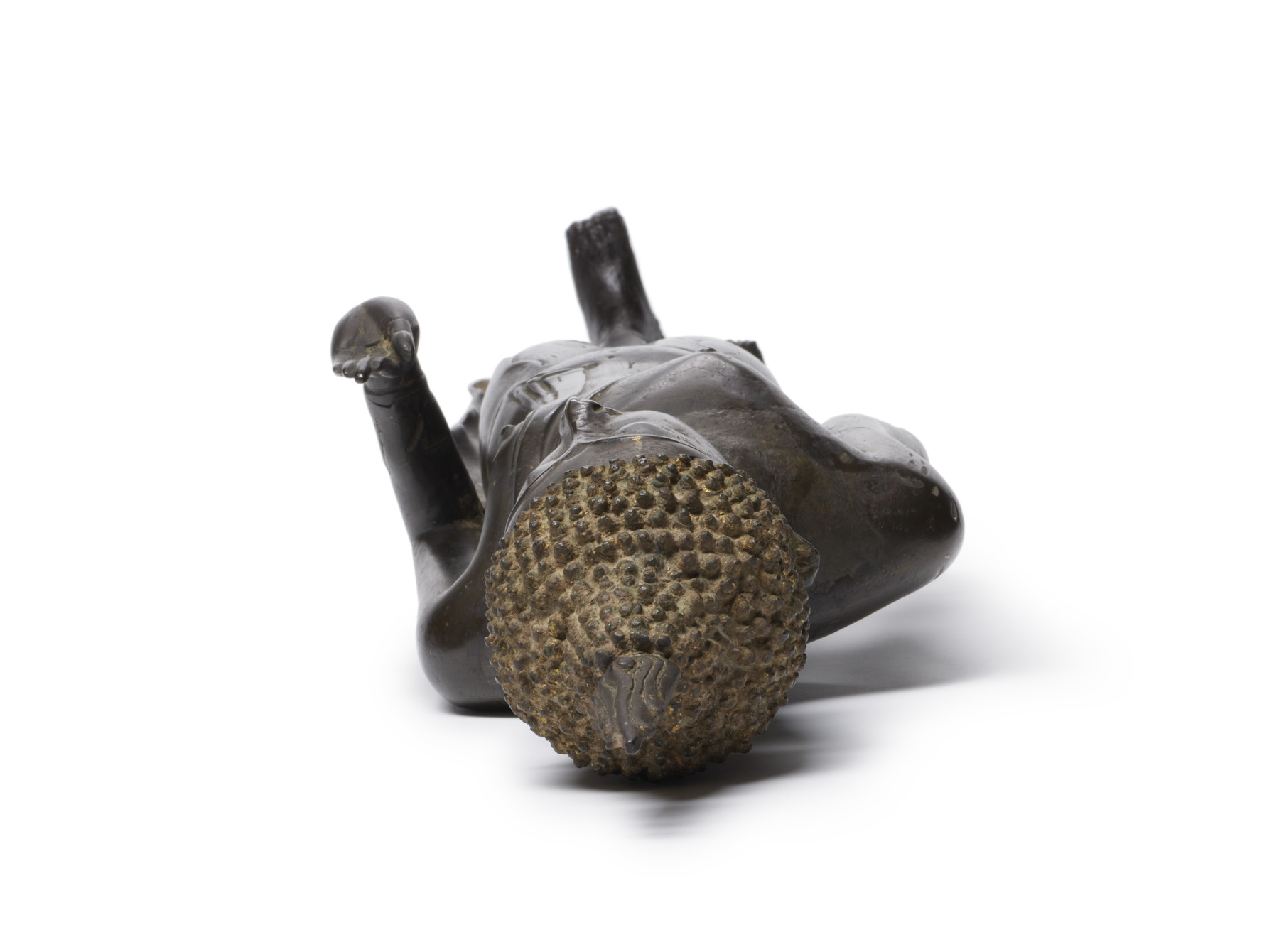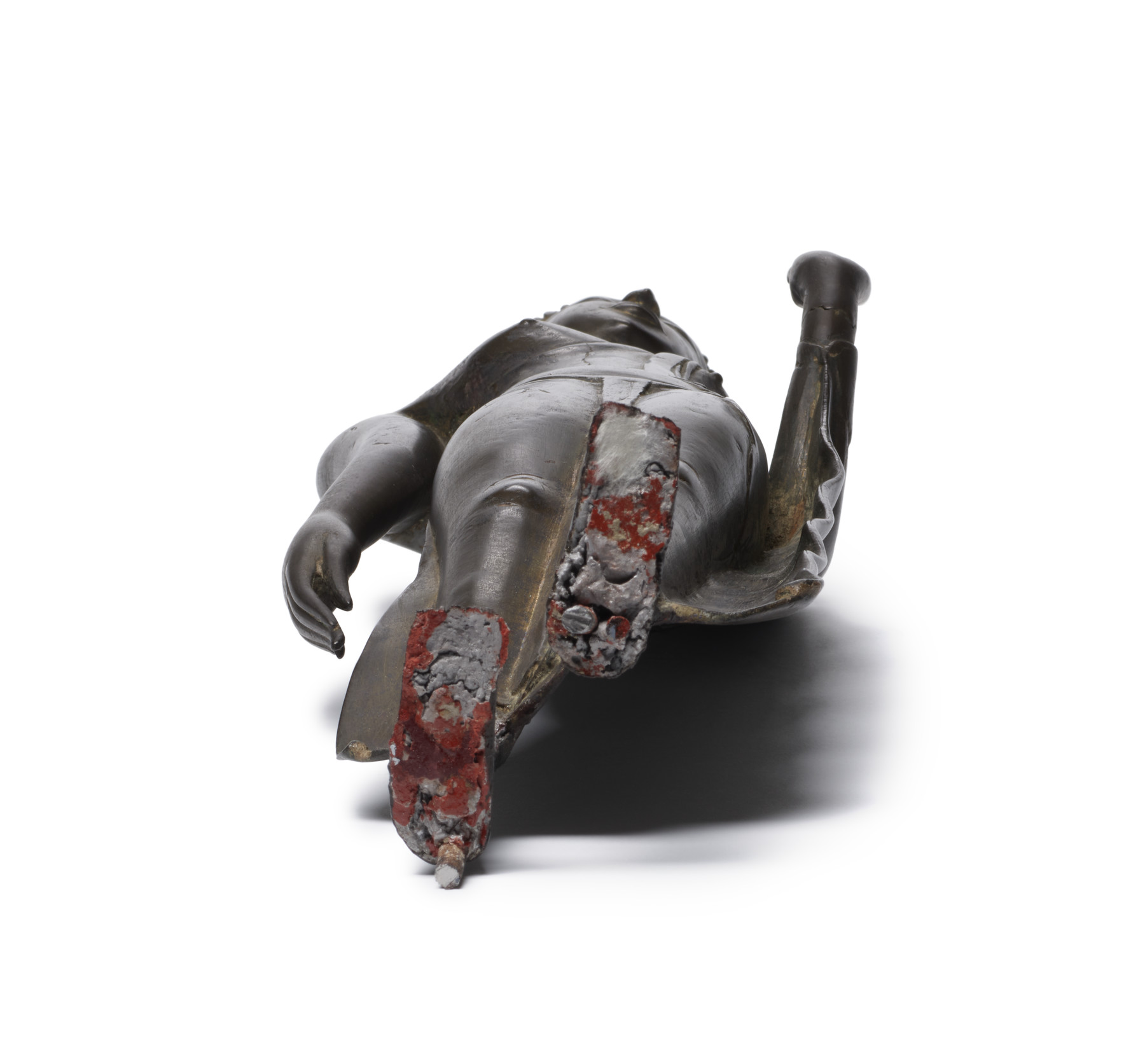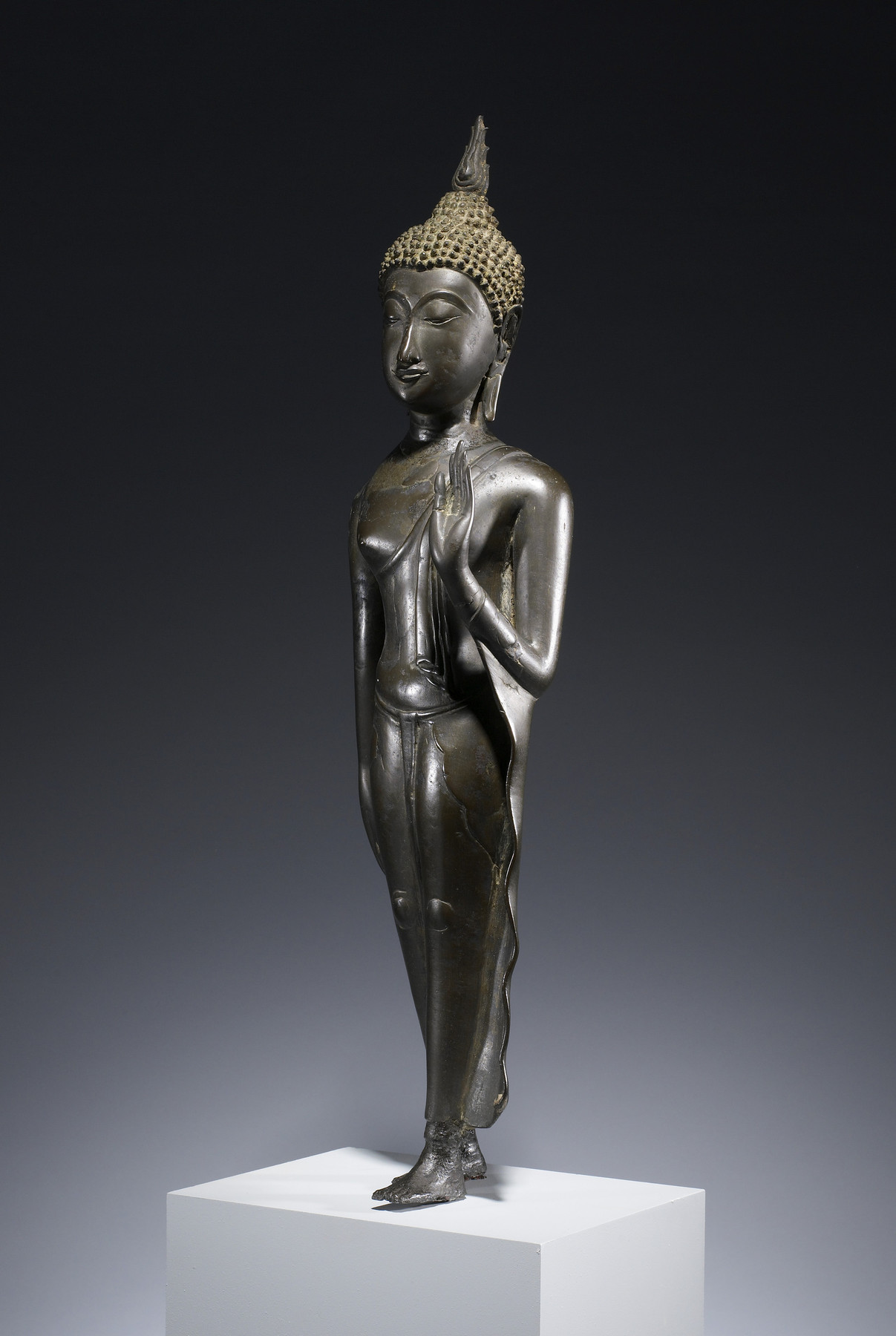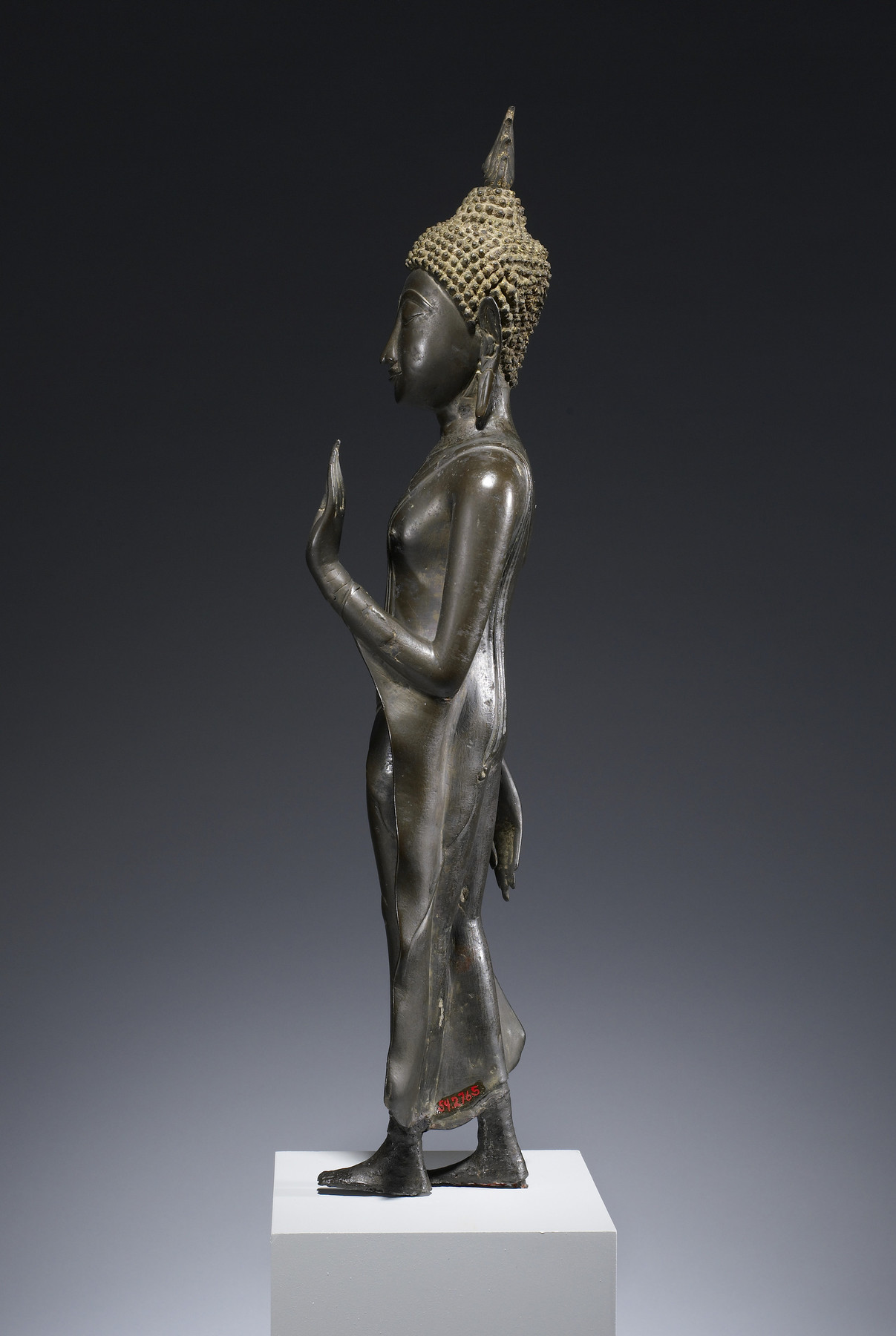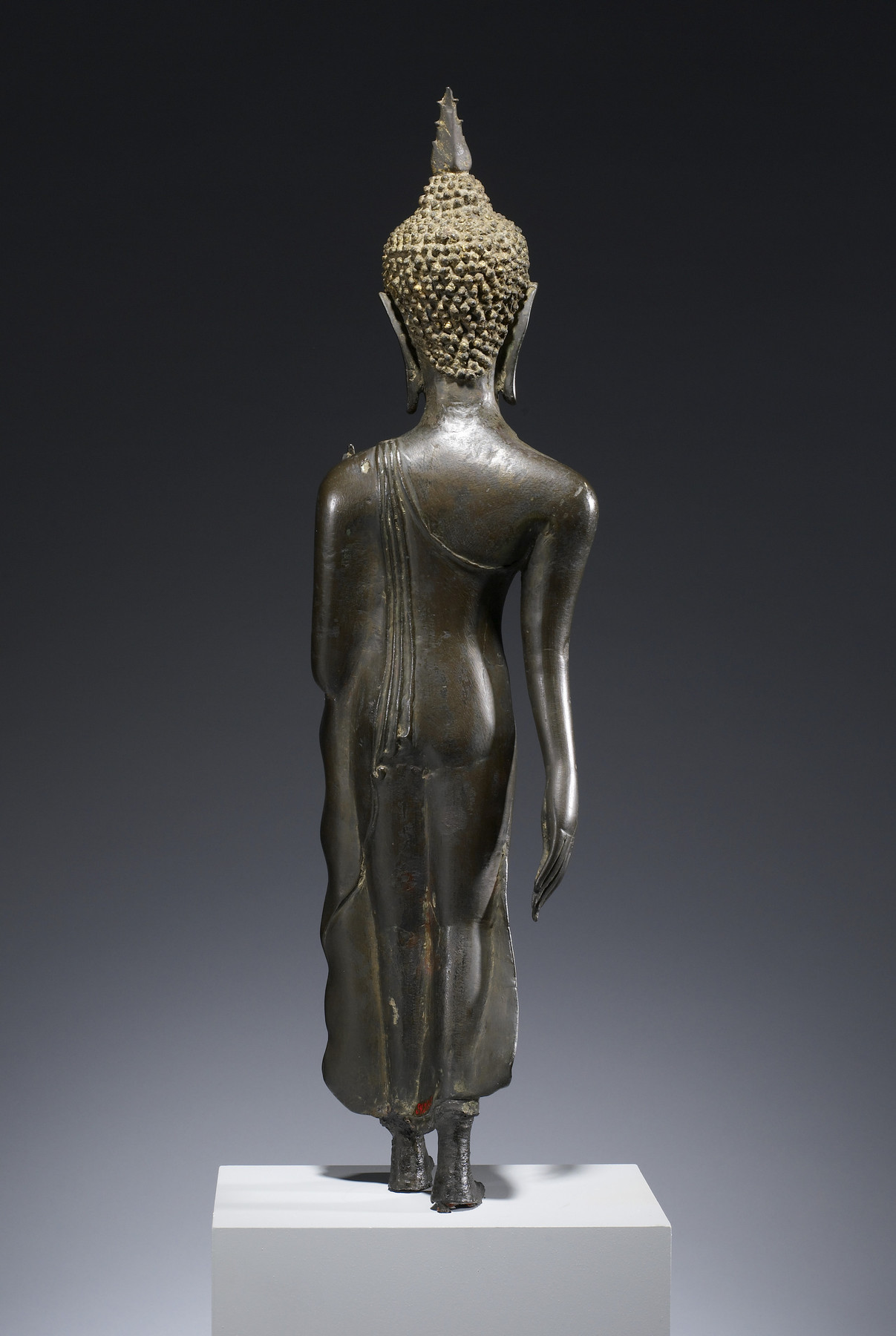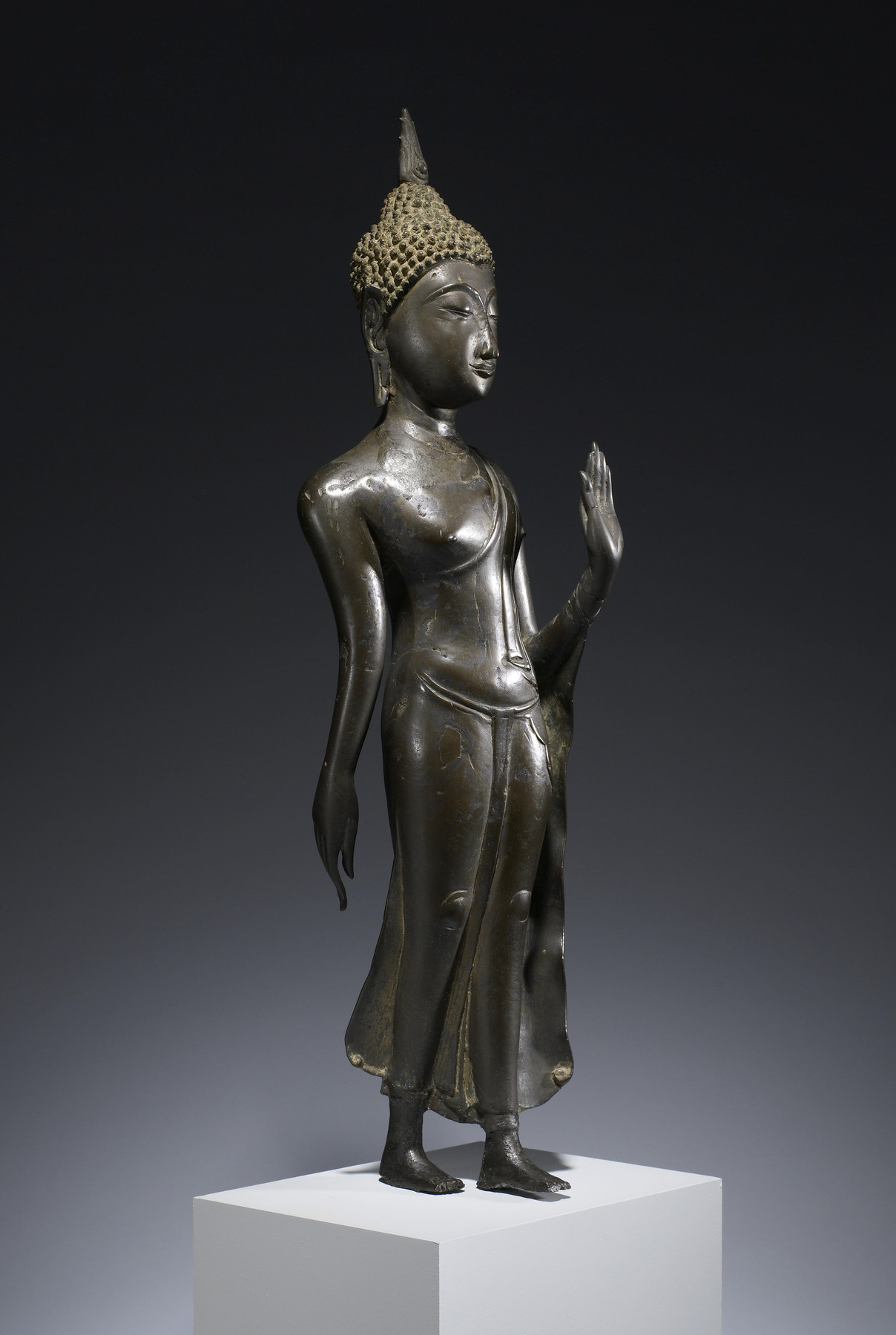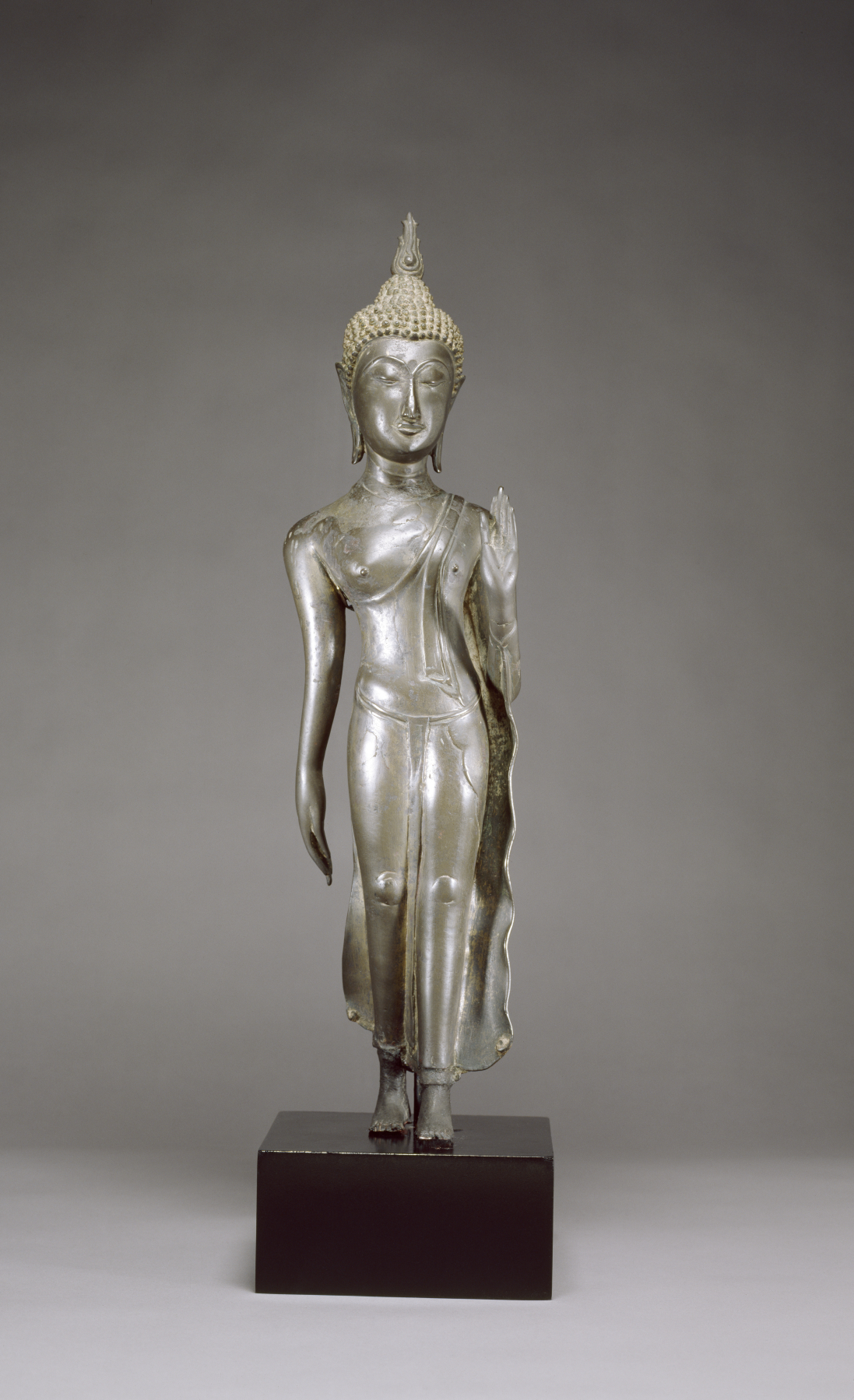Walking Buddha
(Southeast Asia )
Freestanding images of the Buddha had not been made anywhere in Asia before they were created by Thai sculptors in Sukhothai during the 14th century. What is the Buddha doing? It is possible to imagine that he is descending from heaven, where, according to legend, he preached to his deceased mother one rainy season. Or he might be merely walking. This is considered one of the four postures: the others are sitting, standing, and reclining. In the Thai language, the walking Buddha is just called "graceful" ("lila").
Provenance
Provenance (from the French provenir, 'to come from/forth') is the chronology of the ownership, custody, or location of a historical object. Learn more about provenance at the Walters.
Private collection, Kamphaeng Phaet; Alexander B. Griswold, Monkton, Maryland, January 20 1951 [1]; Walters Art Museum, 1992, by bequest.
[1] Presented to the Breezewood Foundation, December 1961, inv. no. 613
Exhibitions
| 2004-2005 | Eternal Presence: Handprints and Footprints in Buddhist Art. Katonah Museum of Art, Katonah; Honolulu Academy of Arts, Honolulu; Rubin Museum of Art, New York. |
| 1995 | Unearthly Elegance: Buddhist Art from the Griswold Collection. The Walters Art Gallery, Baltimore. |
Geographies
Thailand, Kamphaeng Phet (Place of Origin)
Measurements
H with tangs: 20 11/16 × W: 5 7/8 × D: 4 1/2 in. (52.5 × 15 × 11.5 cm); H without tangs: 20 1/4 in. (51.4 cm); Base H: 2 1/4 × W: 4 3/4 × D: 4 3/4 in. (5.72 × 12.07 × 12.07 cm)
Credit Line
Bequest of A. B. Griswold, 1992
Accession Number
In libraries, galleries, museums, and archives, an accession number is a unique identifier assigned to each object in the collection.
In libraries, galleries, museums, and archives, an accession number is a unique identifier assigned to each object in the collection.
54.2765

